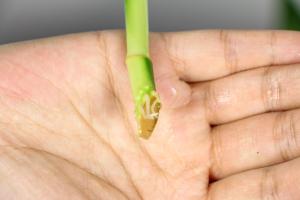Introduction
Light is an essential component for plant growth as it provides the energy necessary for photosynthesis. As a result, several types of lights have been developed, including light emitting diodes (LEDs) and compact fluorescent lights (CFLs). However, conventional lights like incandescent bulbs have been used for plant growth in the past. In this article, we will assess whether regular lights, such as incandescent bulbs, are good for plant growth.
Why are regular lights not the best choice for plant growth?
Incandescent bulbs emit light in the red and orange spectrum, which are not very conducive for plant growth. The bulb also emits high levels of heat, which can harm delicate plants. Additionally, regular lights have a limited lifespan of 750 to 2,000 hours, which makes them ineffective for long-term plant growth. Therefore, regular lights may not be the optimal choice for an indoor plant environment.
What are the downsides of using regular lights for plant growth?
Plants require specific light spectrums at different stages of growth. Regular lights lack the ability to provide tailored light spectrums and can result in limited plant growth. Sunlight is the most effective type of light for plants as it contains a broad range of the electromagnetic spectrum. Regular lights such as incandescent bulbs emit less light when compared to the sun, which limits plant growth. Furthermore, regular lights can increase energy bills due to their low energy efficiency, which can be a burden if growing several plants over a prolonged period.
What are the alternatives to regular lights for indoor plant growth?
LED and CFL lights have become popular alternatives to regular lights for indoor plant growth. They are designed for optimal plant growth as they emit spectrums of light that coincide with different stages of plant growth. LED lights are more energy-efficient and emit less heat when compared to regular lights, making them an ideal choice for indoor plant growth. CFL lights are also energy-efficient and economical, but their spread of light can be narrow, which may require an additional purchase of light fittings. Additionally, both LED and CFL lights have long lifespans, making them a reliable and cost-effective option for indoor plant growth.
Conclusion
In conclusion, regular lights may not be the best choice for indoor plant growth. Instead, LED and CFL lights are better alternatives due to their energy efficiency, tailored light spectrums, and long lifespan. It is important to consider the specific needs of plants when choosing a lighting option, as well as the costs and practicality of the alternative options. Optimal lighting for indoor plant growth can result in healthier plants, faster growth, and a higher yield.

 how many times do yo...
how many times do yo... how many planted tre...
how many planted tre... how many pine trees ...
how many pine trees ... how many pecan trees...
how many pecan trees... how many plants comp...
how many plants comp... how many plants can ...
how many plants can ... how many plants and ...
how many plants and ... how many pepper plan...
how many pepper plan...































